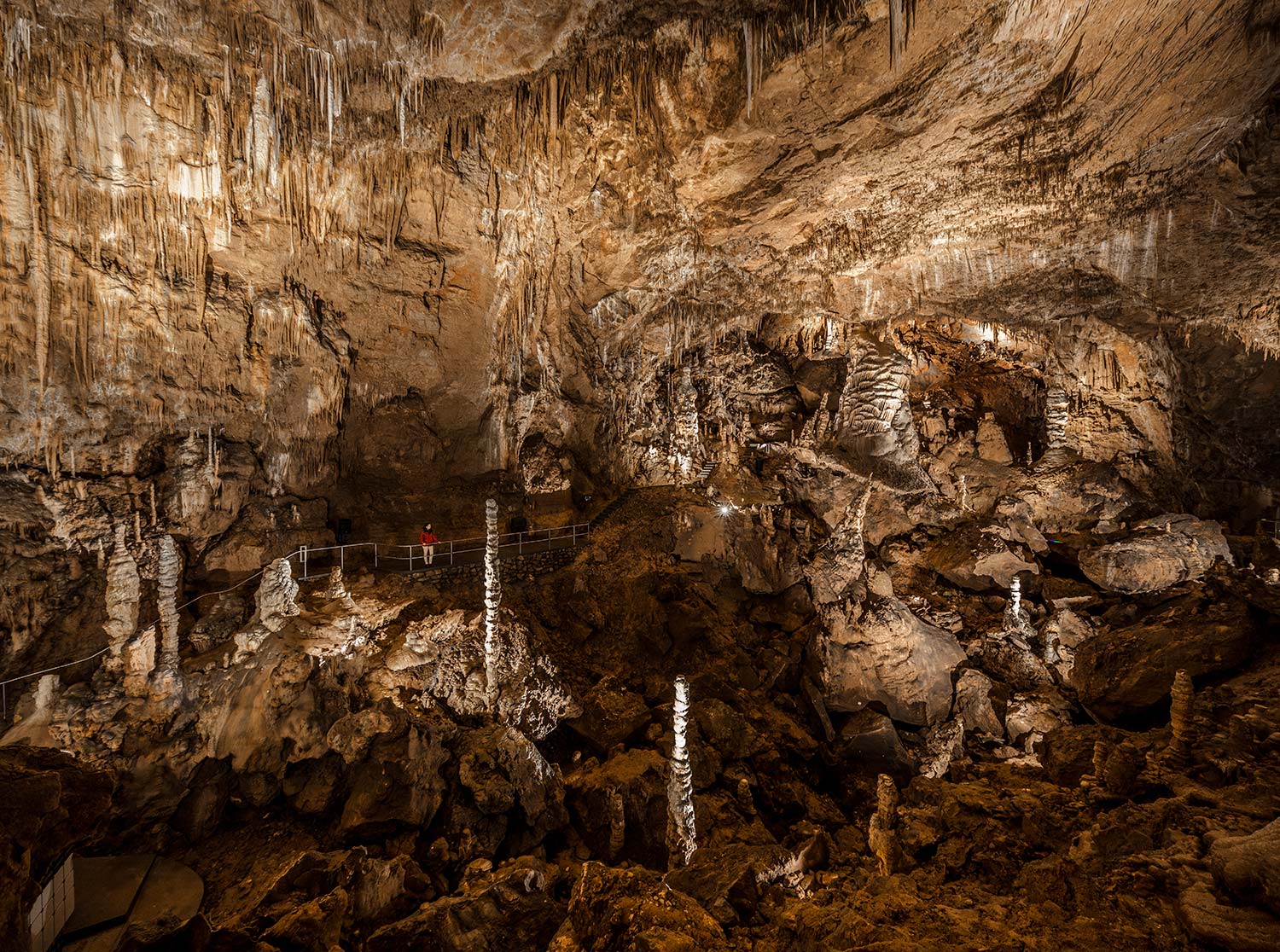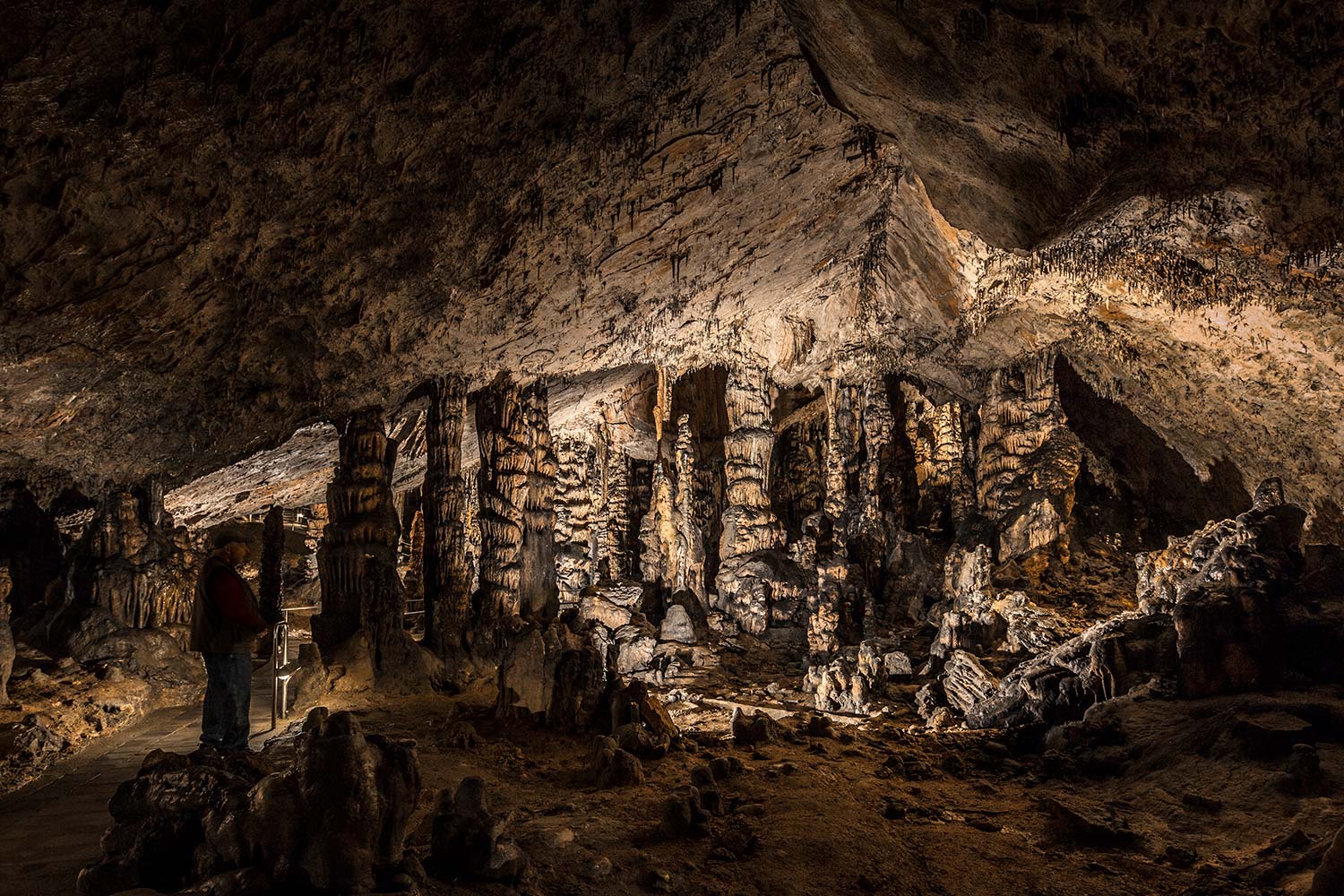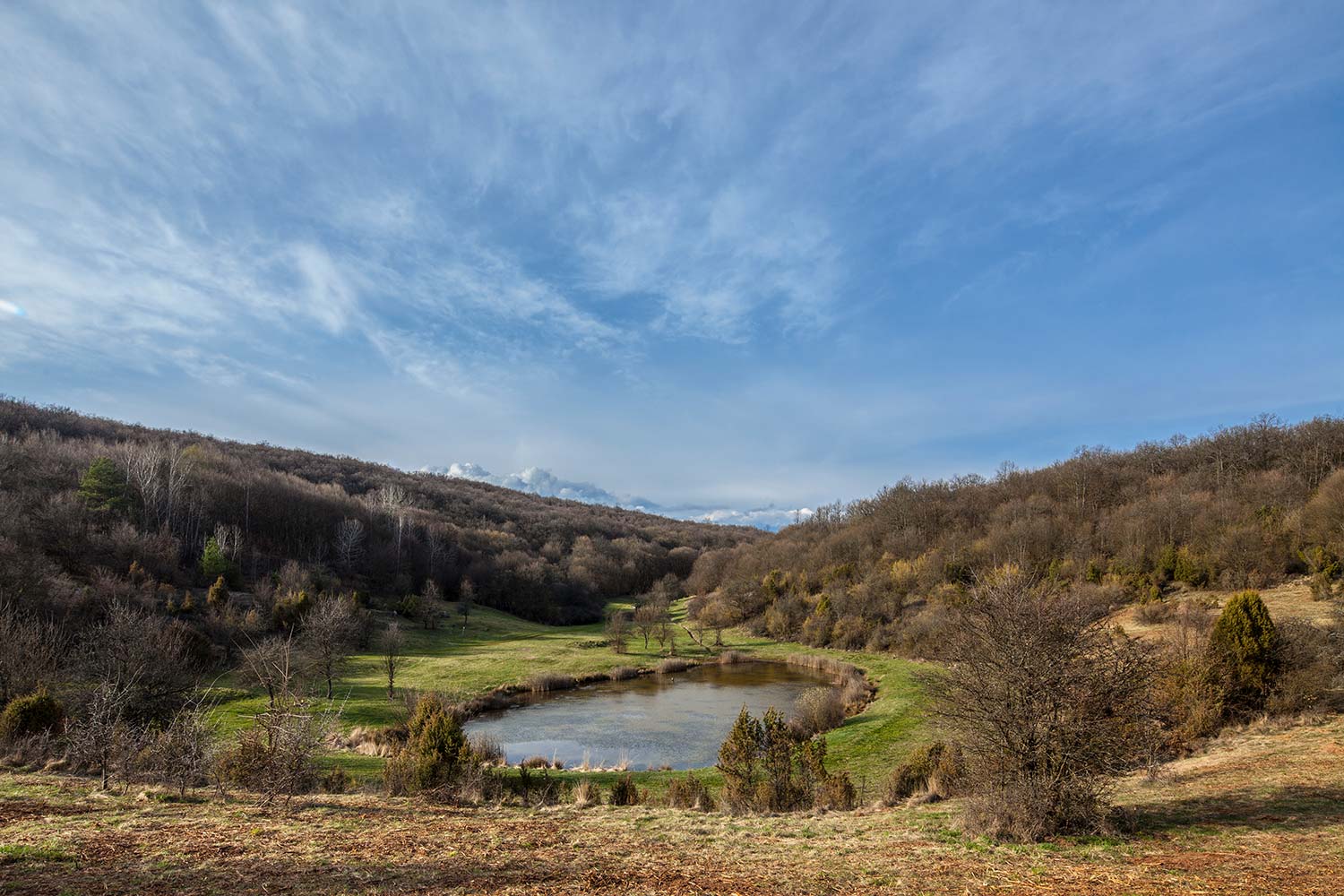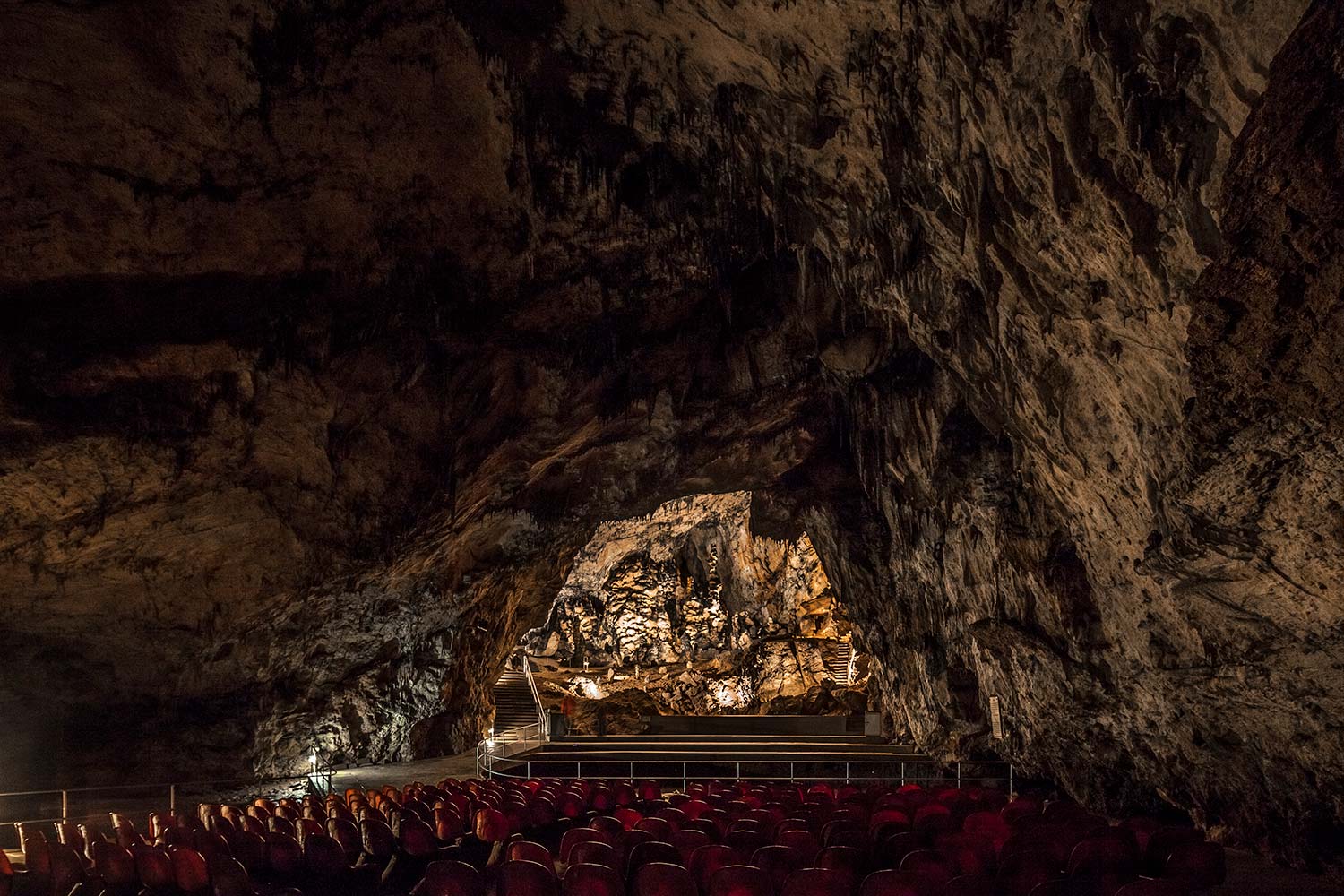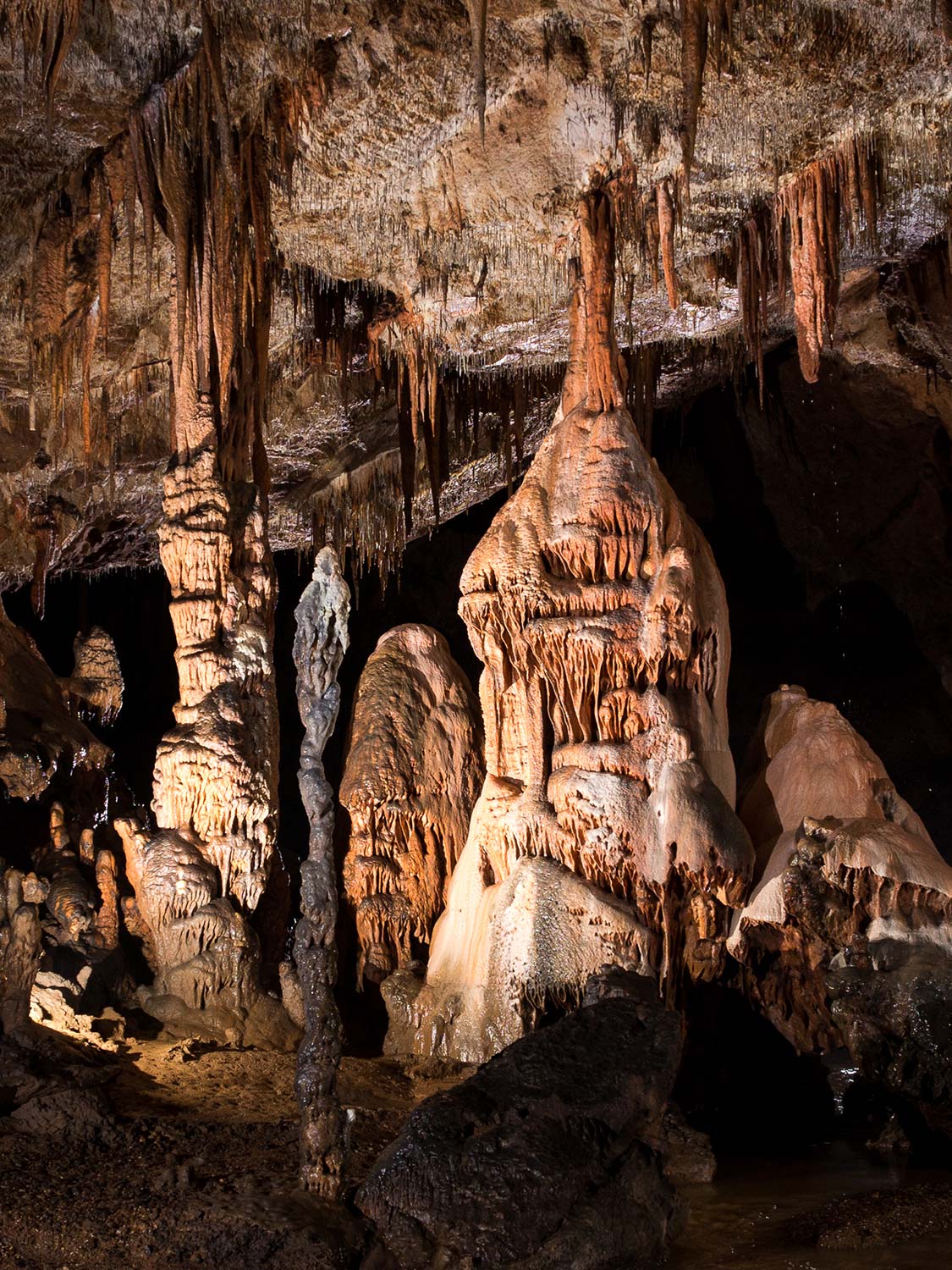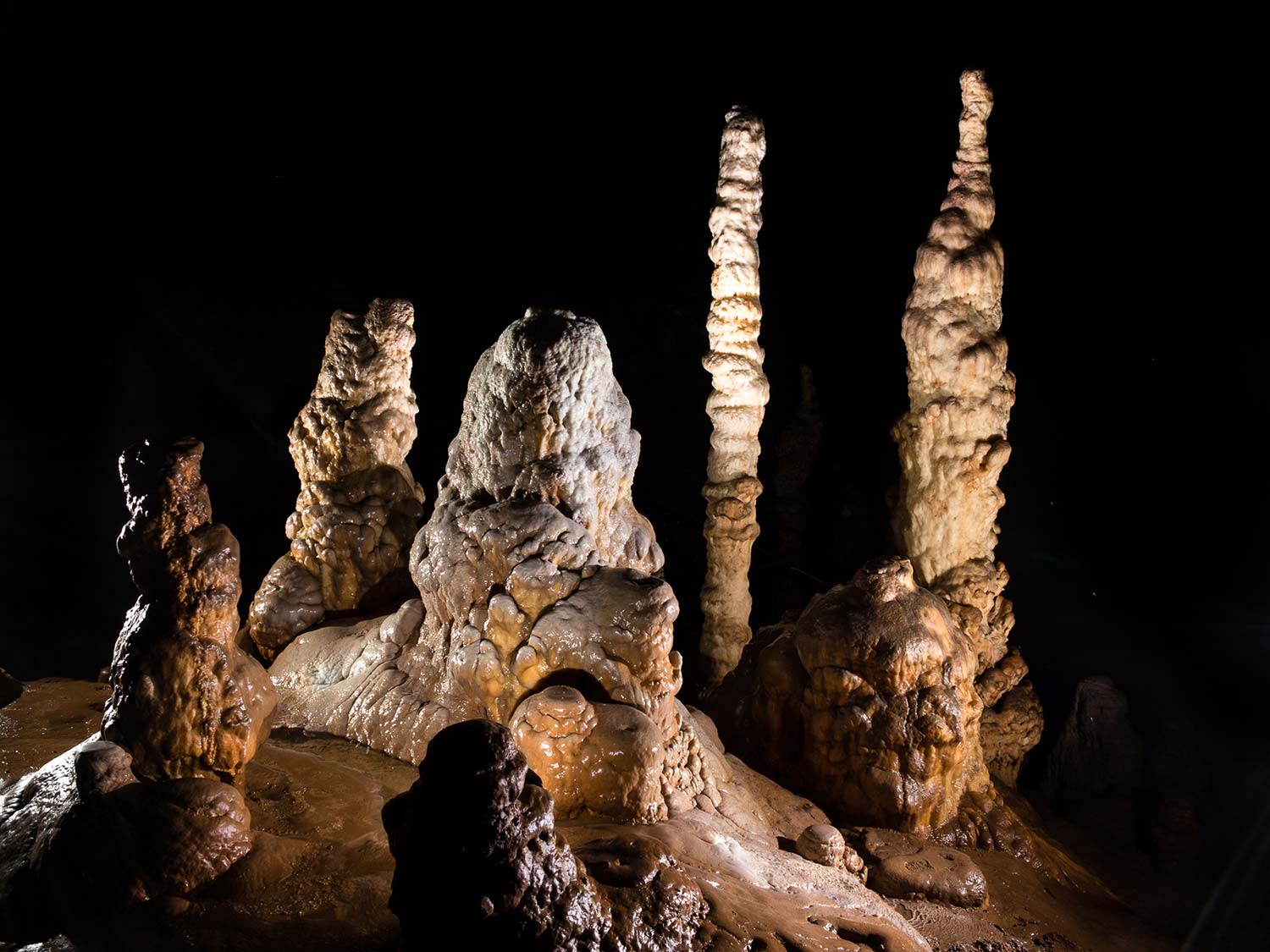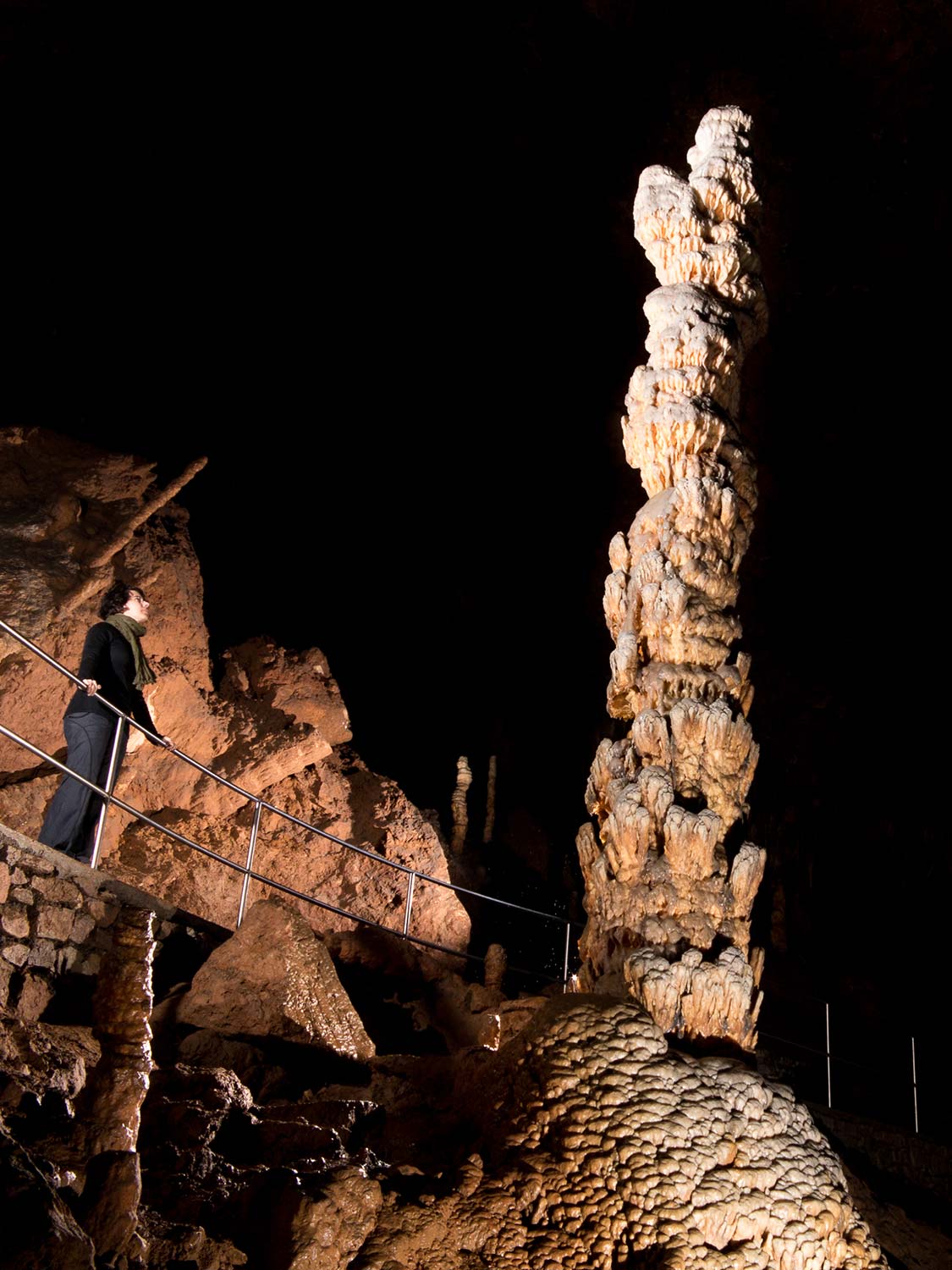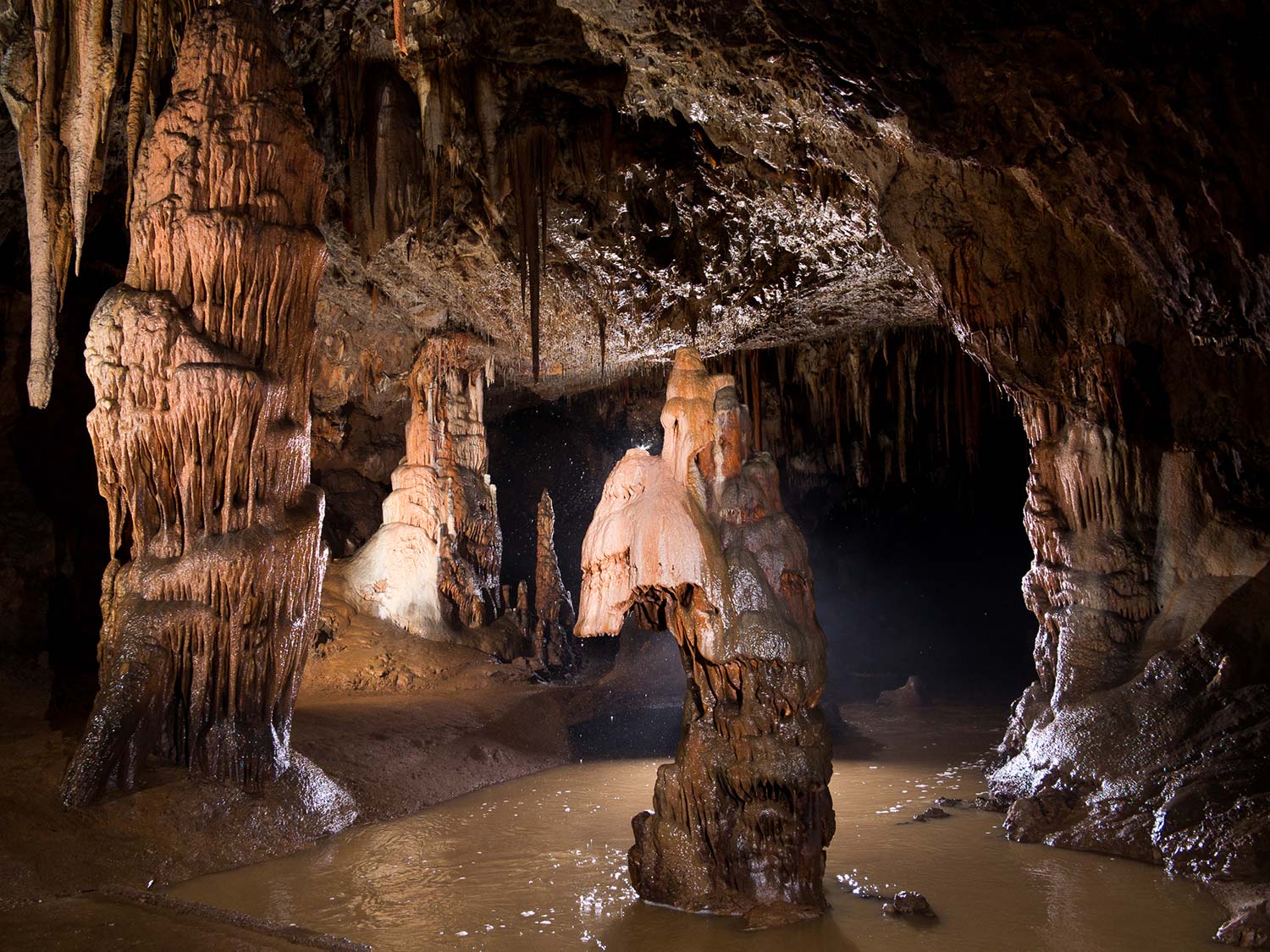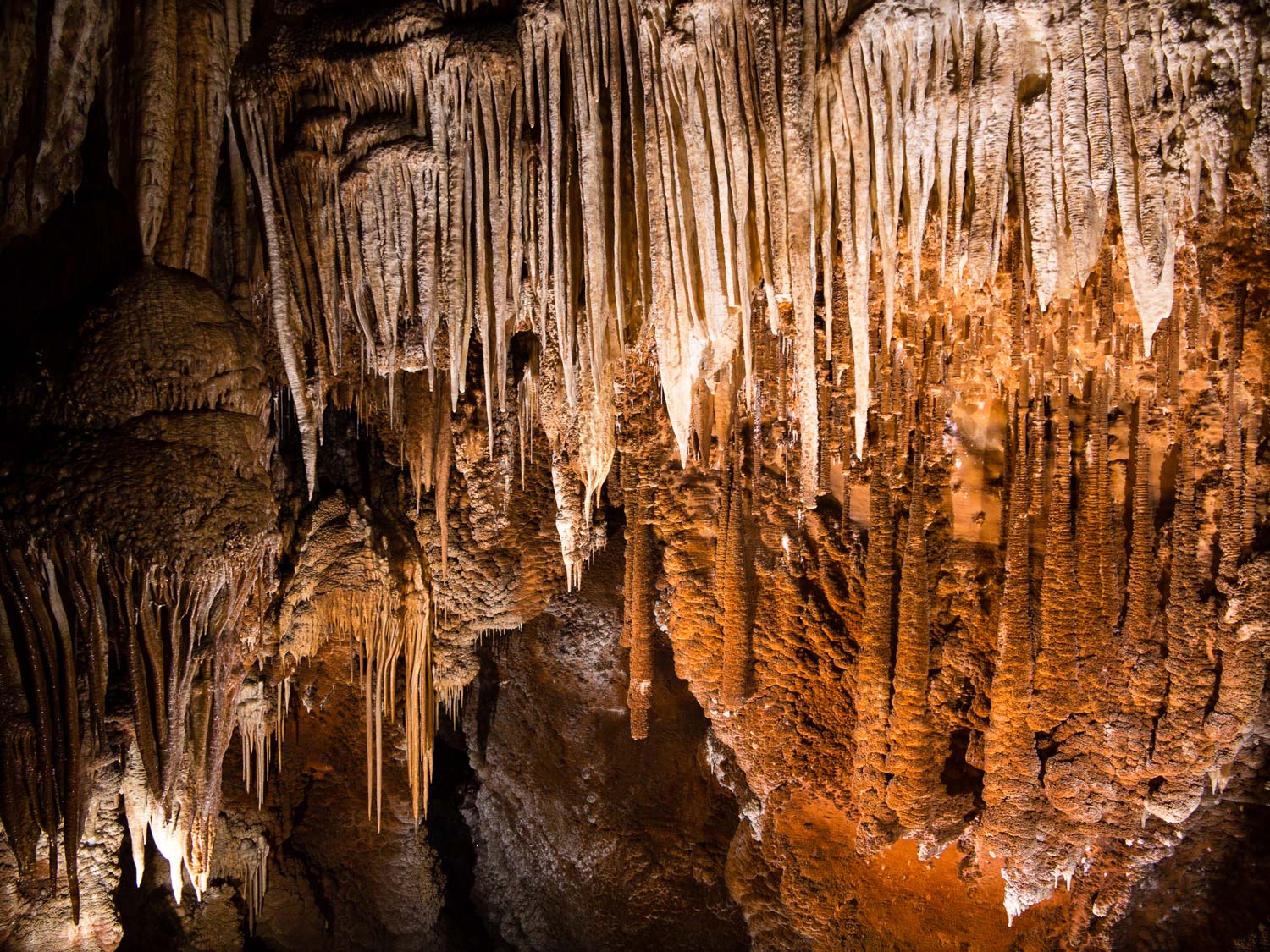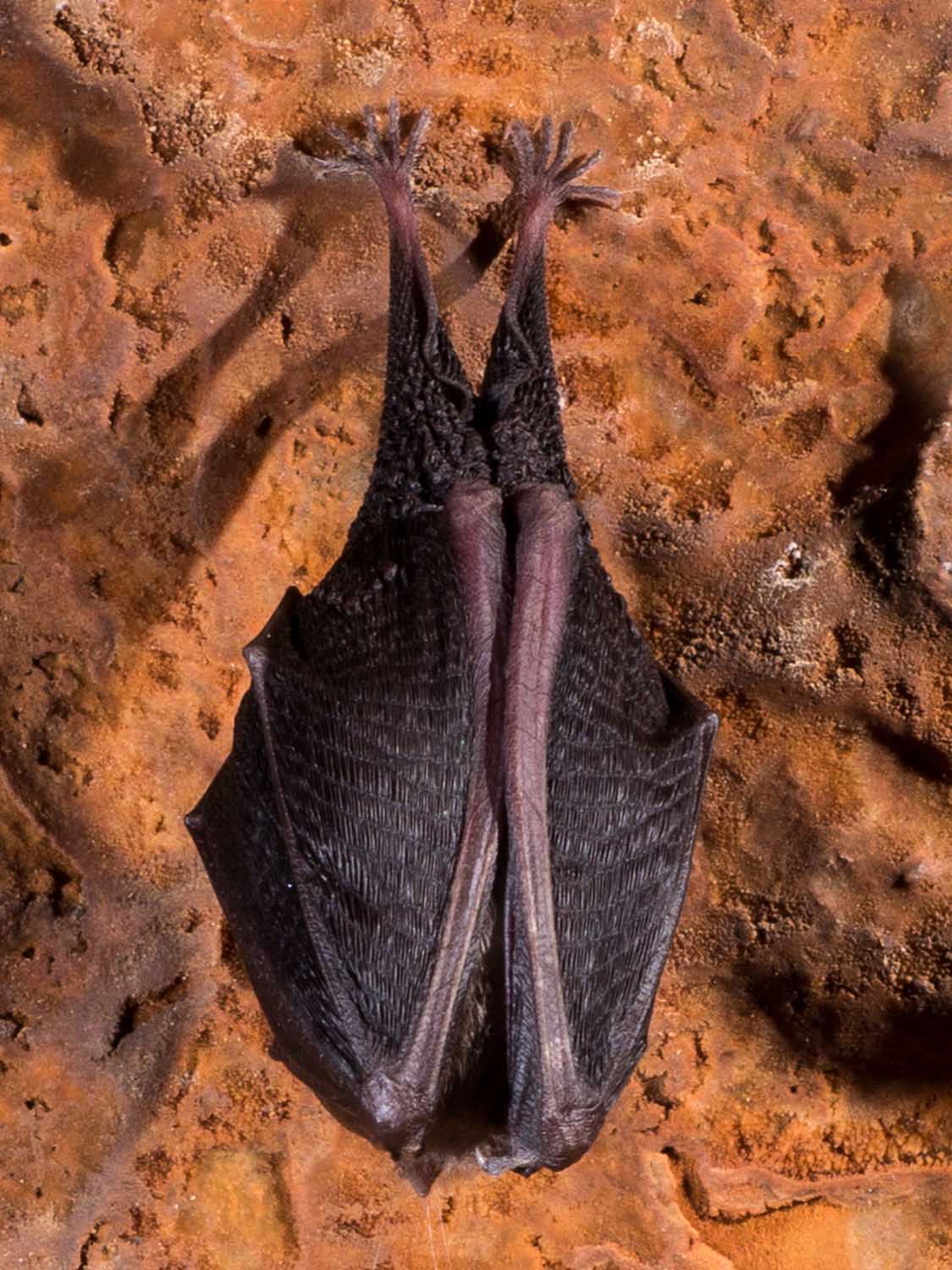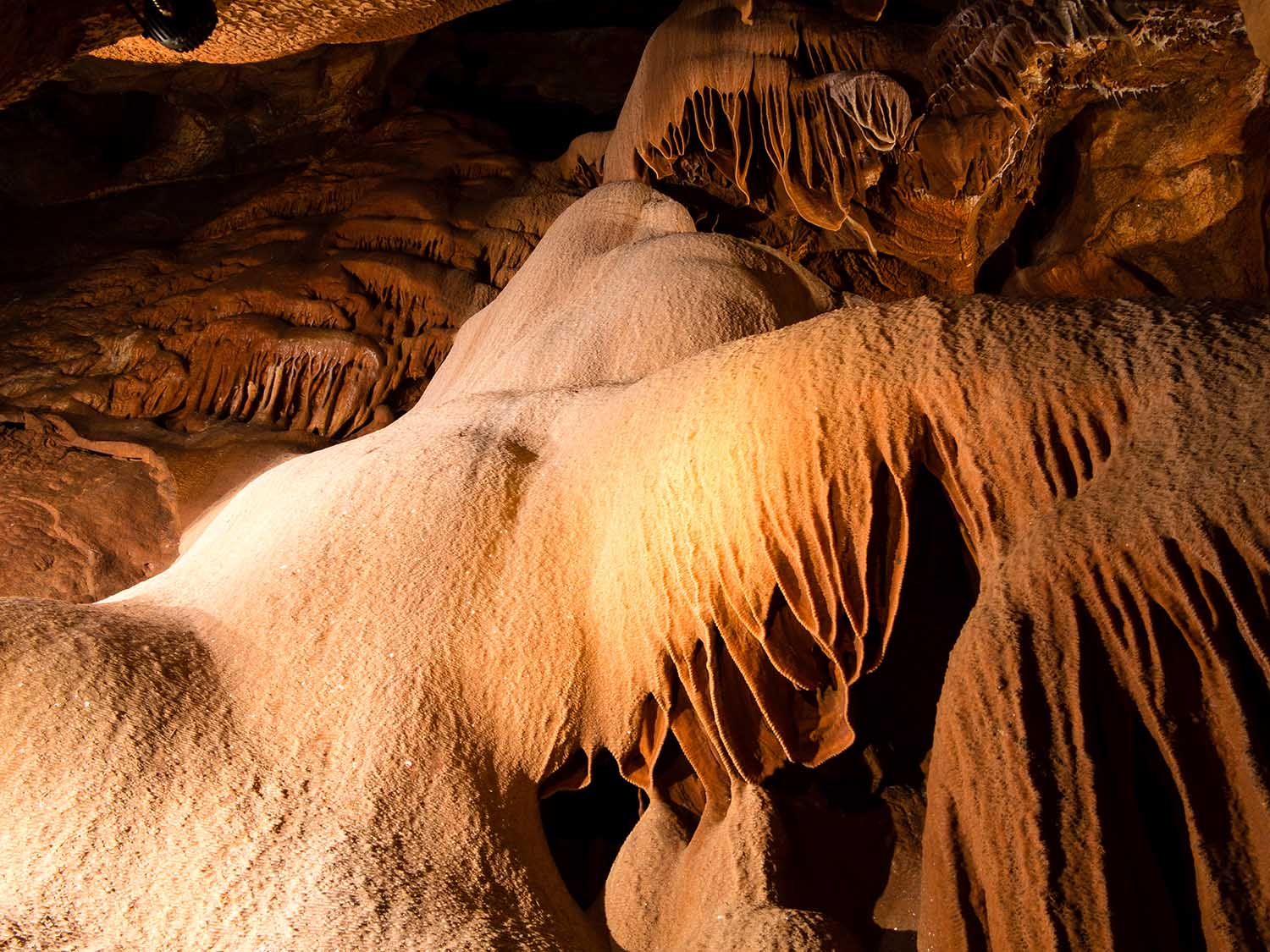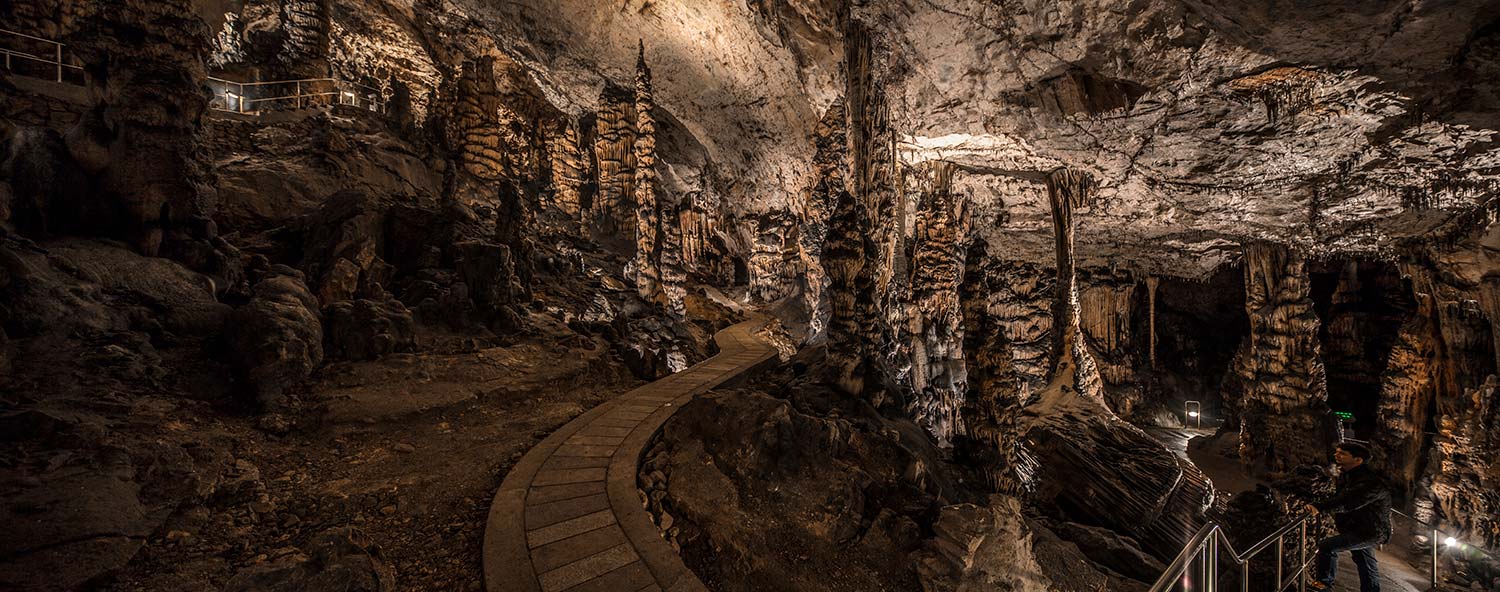
Caves of Aggtelek Karst and Slovak Karst
Introduction
The Aggtelek and Slovak Karst – a contiguous system of caves on the northeastern border of Hungary and the southeastern border of Slovakia – is a unique site with valuable natural and cultural-historical heritage, which was inscribed in the UNESCO World Heritage List in 1995 under the natural category, under identification number 725ter, following a joint nomination submitted by the two countries. The outstanding importance of the caves and their formations is due to their extraordinary richness in forms, complexity, relative intactness and concentration in a small area. Shaped over tens of millions of years, the area is an excellent example of karst formation during both tropical and glacial climates.
Gallery
About the Site
The caves, formed predominantly in Middle Triassic limestone, are 230–240 million years old, and are very diverse in terms of their genetic and morphological features, as well as their fauna. The majority of the caves are typically the result of the corrosive and erosive effect of underground streams flow. Most of them are horizontal, often multi-level passages, their typical shapes are tunnel-like, often winding underground corridors with notches or scallops on the sides and ceiling channels at the top. The carbon dioxide-rich water infiltring down the structural fractures of the limestone to form cavities, called shaft caves - often over 100 metres deep. The Ochtiná Aragonite Cave is a unique solution cave, formed in the lens of crystalline limestone (marble) by the trapped stagnant or slow-flowing water. Other features in the area include hypogenetic cave by mixing corrosion in a predominantly phreatic environment, which are characterized by solution cupolas, caves formed by tectonic fractures, crevice caves created by mass movement and cave cavities formed by ceiling collapse. A particular cave-forming phenomenon can be observed in the Háj Valley, where the large amount of limestone deposited on the anticlines of waterfalls encloses cavities. The caves are decorated with stalactites and stalagmites, coatings, flowstones deposits, branching like helictites and other dripstones forms, as well as cave pearls and popcorns of various shapes, sizes and colours.
The interactions between geological karst processes occurring on the surface with those occurring beneath make this area a natural field laboratory.
More than 1400 caves are currently known in the Aggtelek and Slovak Karst area, 99% of which are still in their original, natural state, and only the remaining 1% were developed as show caves for visitors. The most significant cave system in the property is that of Baradla-Domica, which has a total length of 30 kilometres. It is the longest stalactite-carved, active stream cave in the temperate climate zone and is also a Ramsar site, a wetland of international importance. The Baradla Cave, mentioned first in writing in 1549, with its unique dripstone columns, stalactites, flowstones deposits and other dripstone forms, and thanks to its Concert Hall with excellent acoustics, offers an exceptional experience of cave concerts in addition to hiking. Other notable caves in the karst region include the Rákóczi Cave, famous for its massive and diverse formations of popcorns and helictite; the Béke Cave, the first healing cave in Hungary, dotted with impressive travertine dams formations; the Vecsembükk Shaft Cave, the third deepest cave in Hungary and the Vass Imre Cave, one of the most studied caves in Hungary. The Ochtiná Aragonite Cave and the Silica Ice Cave – both on the Slovak side – are also rich in speleological values.
The presence of caves with diverse morphology and fascinating archaeological remains make the site an underground museum of outstanding value. Relics of prehistoric cultures has been discovered in more than 30 caves. The most significant sites are the Baradla-Domica cave system with its settlements of the Bükk Culture and its unique charcoal drawings in Central Europe, and the Babská Hole Cave and Majda-Hraškova Cave, which were once burial sites for people of the Kyjatice Culture.
The cave world, an exceptional ecosystem, is home to more than 500 cave-dwelling species, including many endemic ones, such as the blind ground beetle, Duvalius hungaricus, or the blind cave amphipod, Niphargus aggtelekiensis, common inhabitant of the region's groundwater. Also of particular value is the cave-dwelling palpigrade Eukoenenia spelea, a species found in the larger caves and considered to be a remnant of Europe's tropical climate in the temperate zone. Another important group of cave-dwellers are bats, few bat species prefer cave conditions and prefer to use these underground cavities for summer roosting and breeding or winter shelter. Twenty-one out of the 28 European bat species have been recorded here, including strictly protected ones, such as the pond bat (Myotis dasycneme) and the Mediterranean horseshoe bat (Rhinolophus euryale). The latter with a wintering population size of around 5 000 individuals per year is of European importance in the Baradla-Domica cave system. The humid environment is also an ideal habitat for amphibians, such as the fire salamander (Salamandra salamandra).
Map
Map delimitation of the World Heritage area of the Aggtelek Karst and the Caves of the Slovak Karst.

Outstanding Universal Value
The Outstanding Universal Value of the ‘Caves of the Aggtelek Karst and Slovak Karst’ is recognized by Decision 37COM 8E of the UNESCO World Heritage Committee, adopted at its 2013 session. According to this decision, the Caves of Aggtelek Karst and Slovak Karst are outstanding for the large number of complex, diverse and relatively intact caves concentrated into a relatively small area. Today more than 1400 caves are known in the property that is double of the number recorded at the time of inscription. Karst processes have produced a rich diversity of structures and habitats that are important from a biological, geological and paleontological point of view.
The inscription of the site on the World Heritage List is justified by its compliance with criterion (viii).
-
Criterion (viii)
The property Caves of Aggtelek and Slovak Karst, while typical of many karst localities in Europe, is distinctive in its great number of different types of caves found in a concentrated area. Geological processes causing karst features to be buried by sediment and then later reactivated or exhumed provide evidence pertaining to the geologic history of the last tens of millions of years. Relicts of pre-Pleistocene karst (i.e. more than about 2 million years old) are very distinct in the area, and many of them show evidence for sub-tropical and tropical climate forms. These include rounded hills that are relicts of tropical karst later modified by Pleistocene periglacial weathering. This suite of paleokarst features, showing a combination of both tropical and glacial climates, is very unusual and is probably better documented in the World Heritage area than anywhere else in the world.
Contact
Aggtelek National Park Directorate
Address: H-3758 Jósvafő, Tengerszem oldal 1.
E-mail: info.anp@t-online.hu
Phone: +36 48 506-000
http://www.anp.hu/hu

